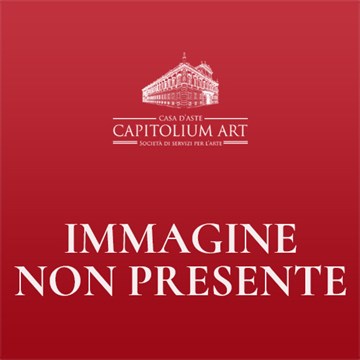Amerigo Bartoli Natinguerra Biography
Amerigo Bartoli Natinguerra was born in Terni in 1890. After completing his high school studies in 1906, he moved with his family to Rome where he attended the Academy of Fine Arts, also practicing in the studio of the painter E. Ballerini. In 1909 he was admitted to the free higher course in painting with Aristide Sartorio, with whom he graduated with honors in 1911, receiving a prize from the Ministry of Public Education, which consisted of a scholarship for an artistic education trip to Florence and Turin . In 1912 he obtained the qualification to teach drawing in technical and normal schools. After completing his studies at the academy, he continued to practice in Sartorio's studio. In 1921 he visited Munich, Dresden and Berlin and, in 1931, he went to London with his friend Emilio Cecchi. In 1936 he executed the fresco decoration of some rooms of the headquarters of the Banca Nazionale del Lavoro in Rome and, in 1939, the fresco with the Baptism of Jesus in the crypt of the church of S. Giovanni Battista, in the Oliveti village of Tripoli. His participation in official exhibitions was very early; in 1913 he was admitted by the jury to the competition for the national artistic scholarship, with the painting Group of women looking at a naked adolescent, and in the same year he obtained an honorable mention in the Lana competition, organized by the Accademia di San Luca. In 1921 he resumed his application for an artistic scholarship with the painting Cacciata di casa (Rome, V. Bartoli Collection); in 1922 he participated in the Fiorentina Primaverile as a member of the "Valori Plastici" group and in 1929 at the Lazio Artistic Union Exhibition; in 1935 he participated in the Exhibition of Contemporary Italian Art in Paris and in the Roman Quadrennial. At the 1930 Venice Biennale he received first prize for the composition for the famous Friends at the Café, now at the Gallery of Modern Art in Rome. Despite being strongly linked to the Roman artistic environment, dominated by the tonalism of the "Roman School", he did not give up his own precise figurative language, closer to A. Spadini and Soffici and a continuation of the nineteenth-twentieth century tradition. From 1939 to 1960 he taught painting at the Academy of Fine Arts in Rome and for this he received a first degree and the gold medal of merit for the school. During the war he participated in the III Bergamo Painting Prize in 1941 and, in the same year, he was at the Salón de Humoristas in Madrid, where he won the gold medal for drawing. After the war he continued to practice his activity as a painter alongside his, perhaps better known, work as a satirical cartoonist. In 1947 he participated as a painter in the National Exhibition of Sacred Art "Angelicum" in Milan, and again in the Venice Biennials of 1950 and 1952, obtaining prizes and merits. In 1970 he organized a retrospective of his work at the Galleria Centro in Milan. He died in Rome on 20 December 1971.









